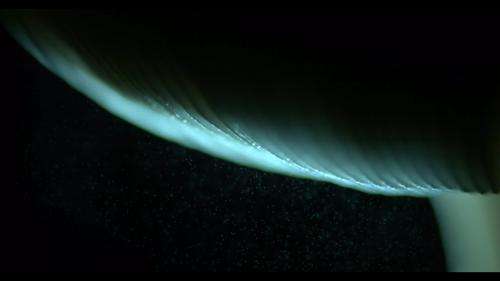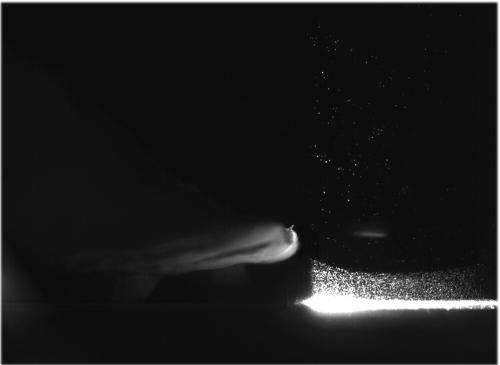Physics shows how the mushroom spews its spores

Plants use a variety of methods to spread their seeds, including gravity, forceful ejection, and wind, water, and animal dispersion. But what of the mushrooms, whose spores also need to be strewn far and wide to ensure their propagation?
Biologists have long thought that the spores produced by a mushroom's cap simply drop into the wind and blow away. The problem with that notion, said Emilie Dressaire, a professor of experimental fluid mechanics at Trinity College in Hartford, Conn., is that spores can be dispersed even when the air is still. So how do the mushrooms do it? Dressaire, along with Marcus Roper of the University of California, Los Angeles (UCLA), believe they have found the answer: they make their own wind.
Dressaire will present the findings in a talk today at the 66th Annual Meeting of the American Physical Society's (APS) Division of Fluid Dynamics (DFD), held Nov. 24-26, 2013, in Pittsburgh, Pa.
Using high-speed videography and mathematical modeling of spore dispersal in commercially grown oyster and Shiitake mushrooms, Dressaire, Roper, and their students found that the fungi created their wind by releasing water vapor. The vapor cools the air locally, and this creates convective cells that move the air around in the mushroom's vicinity.
Dressaire said these air movements are strong enough to lift the spores clear of the mushroom. As a result, she continued, "mushrooms are able to disperse their spores even in the most inhospitable surroundings."

The team believes this evaporative cooling process might be used to some degree by all mushroom-producing fungi, including those that cause disease in plants, animals, and humans.
"Most people, even scientists, think of mushrooms simply as machines for producing spores," Roper said. "The more spores each machine produces, the more likely it to successfully colonize new habitats." But the new work suggests that there is much more going on.
"Our research shows that these 'machines' are much more complex than that: they control their local environments, and create winds where there were none in nature," Dressaire said. "That's pretty amazing, but fungi are ingenious engineers."
More information: The presentation, "Control of fluidic environments by mushrooms," is at 11:22 am on Monday, November 25, 2013 in the David L. Lawrence Convention Center Room 306/307. ABSTRACT: http://meeting.aps.org/Meeting/DFD13/Event/203211
Provided by American Physical Society





















